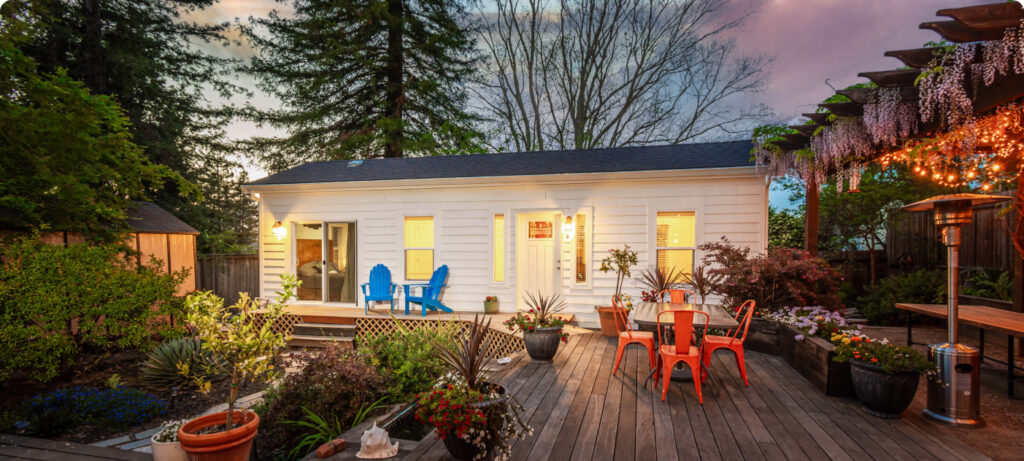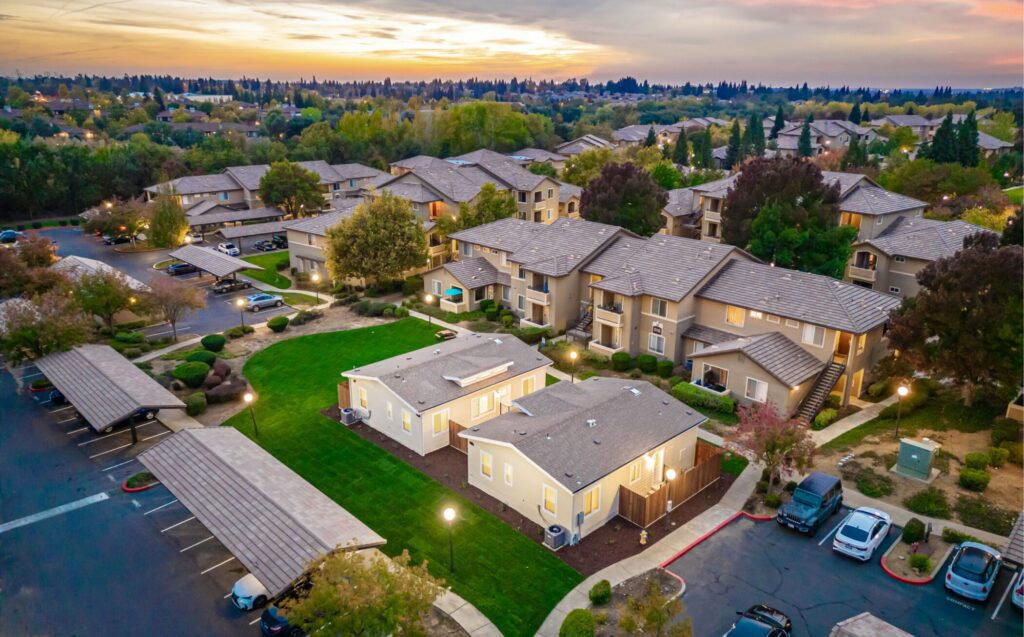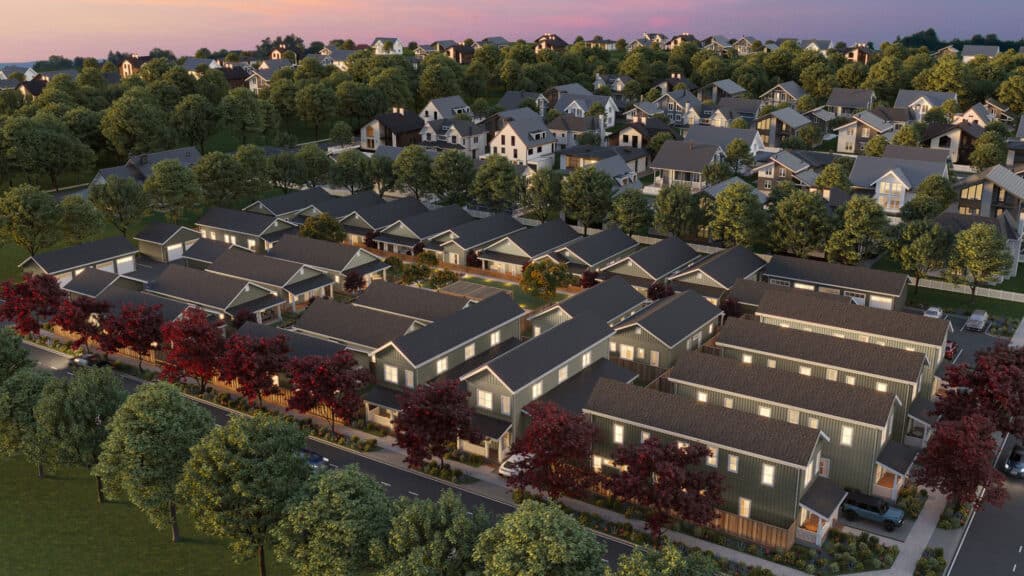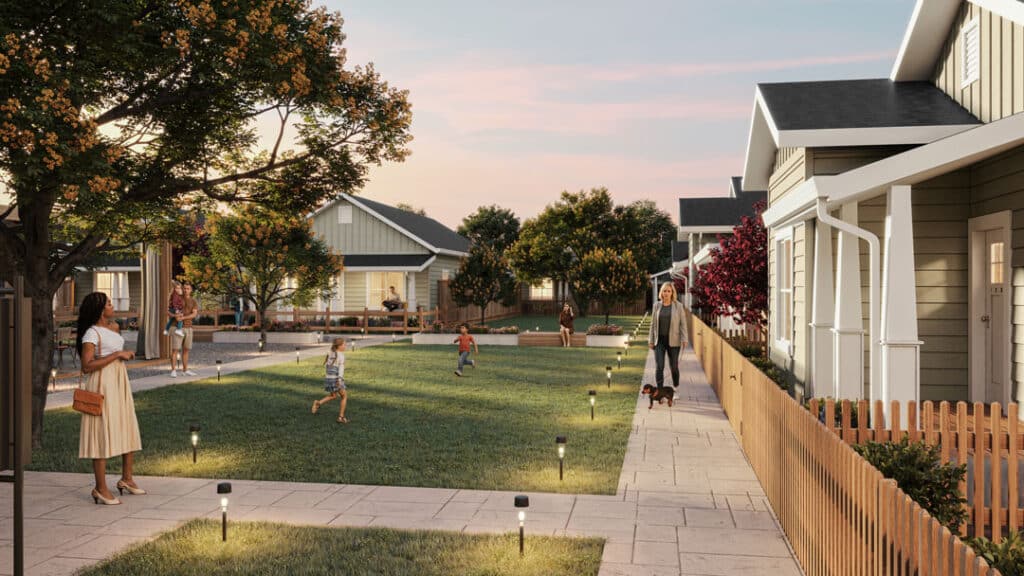Frequently asked questions
General
Accessory dwelling units (ADUs) are housing units built on existing single or multifamily residential properties. They’re also known as backyard homes, second dwelling units, guest houses, casitas, backyard cottages, mother-in-law units, and granny flats. There are many different types of ADUs, including both detached structures located in a back or side yard and attached additions to a primary home. Learn more about the options at our blog.
In 2020 and 2021, new laws were passed making it easier for Californians to build ADUs. Major changes to zoning regulations, permit requirements, and developmental standards went into effect, superseding previously restrictive local regulations. While zoning, regulations, and fees vary by municipality, the new state laws say that ADUs can be built on properties zoned for single-family and multifamily use.
If you live on a residential lot and have the required space and access, you can build one detached ADU and one junior ADU (a unit no more than 500 square feet located within the home). If you live on a multifamily lot, two detached ADUs are allowed on the property.
ADUs are a budget-friendly and minimally disruptive option for adding needed housing to existing neighborhoods. The new favorable legislation and increased awareness are likely driving popularity.
Backyard homes work with certain socioeconomic trends as well, such as allowing people to age in place or form multigenerational households to ease caregiving responsibilities and cost. And they can provide additional rental income in an uncertain economy. Many people also are looking to downsize and simplify their lives while still living in a neighborhood setting.
Our average build with a standard model and site conditions takes about seven to twelve months from start to finish. However, each project will vary depending on the location and scope of work.
ADU construction
Our homes are high-quality prefabricated (prefab) construction, also known as manufactured housing, meaning they’re built in controlled factory conditions with a rigorous inspection process. Traditional onsite builds can be costly and unpredictable in terms of prices and timelines, but prefab construction allows us to ensure high quality as well as an efficient and predictable process, while keeping costs as low as possible.
“Prefab” is shorthand for “previously fabricated,” meaning built in a factory and then installed and finished onsite. Our prefab units are transported to your site by truck and installed in your yard. Prefab construction allows us to keep the cost low, the quality high, and the process efficient.
Many types of properties can accommodate an ADU, and we offer homes ranging from 440 square feet to 1,200 square feet. To determine whether your particular property is suited for an ADU, click the button to get a free assessment found throughout our website.
Our ADUs are built on a stem wall foundation.
Yes, all of our ADU foundations are engineered for earthquake safety.
ADUs connect to the main sewer and water service to the primary residence. In most cases, a connection to the sewer is established outside the primary residence, and a connection to water service is accessed through the foundation into the basement of the primary residence. Our ADUs connect to existing electrical service through either the main panel or a separate panel on the outside of the house.
Our units are all electric to comply with California state law, and require 200 amps. We can help you update your electric panel if necessary.
We may need to upgrade your percolation system to allow for more capacity. The upgrade will depend on the capacity of your existing system and the size of your chosen unit.
Our units come outfitted with a 15-kilowatt electric furnace, which is rated to provide enough heat for a 1,500-square-foot interior. A/C is not included in the standard package but is available as an upgrade.
Cities often have special building regulations for hillside construction. Feasibility of hillside construction must be determined on a case-by-case basis.
A manufactured home is constructed in a factory to comply with the National Manufactured Home Construction and Safety Standards, a uniform building standard administered and enforced by the U.S. Department of Housing and Urban Development (HUD). This code supersedes all local building codes. Manufactured homes are not the same as mobile homes, as they are placed on permanent foundations and become part of the real estate.
Our prefab homes undergo rigorous inspection designed specifically for the factory production environment. Uniformity, consistency, enforcement, and thoroughness are easier to maintain in a factory environment, and inspections take place along with the manufacturer’s own in-plant inspection and quality assurance process.
The HUD code has numerous benefits. First, with HUD-approved prefab homes, the entire plan approval process through local building agencies is bypassed. Second, the federal standards ensure quality design and construction, strength and durability, transportability, fire resistance, and energy efficiency. Third, HUD code sets performance standards for the heating, plumbing, air conditioning, thermal, and electrical systems.
Prefab homes, thanks to technological advances and process efficiencies, can cost up to 45 percent less per square foot than a newly constructed traditional site-built home. Specific prices vary based on the home, location, and scope of work.
Permits and city approval
The planning department must approve or deny permits for both single- and multifamily ADUS within 60 days.
According to new state laws, an additional parking spot is not needed if the ADU is located within a half mile of a public bus stop or rail station; is on a street that requires on-street parking permits but the permit has not been offered to the occupant of the ADU; or is located within one block of a public car-share program.
In fact, if you demolish a parking stall to build an ADU, and your property is within a half mile of a bus stop, you don’t have to replace that parking stall.
Most jurisdictions require ten feet between the primary home and the ADU or six feet if the primary home and ADU both have fire sprinklers. Five feet is typically required for side and rear property lines. Front setbacks vary by city and zone.
Reports needed depend on the property and project. Our team handles all required reports as part of our standard service, included in the price.
No. The new state regulations specifically prohibit HOAs from interfering with ADU construction.
We will establish separate cable and, if desired, phone service to the ADU. If the ADU is rented out, these bills can be assumed by the tenant. In most cases, the ADU owner adds another garbage receptacle to their monthly bill and then bills the tenant for the additional cost. Existing recycling receptacles should be sufficient for recycling needs.
All permitted ADUs are assigned a separate mailing address, usually by adding “A” to the primary residence’s address and “B” to the ADU’s address. If requested, we will install a separate mailbox in a location compatible with existing mail service.
ADU prices and financing
The primary home will not be reassessed—ADUs do not trigger Prop 13. Your property tax will be recalculated based on a blended assessment, which will increase your annual property tax by about 1 percent of the value of the ADU.
With a blended assessment, the base value of the existing house stays the same. The ADU’s value at the current market rate is added to the existing home’s value. And we’ll create a depreciation schedule for you.
Many financing options are available, such as construction loans, cash-out refinancing, and home equity lines of credit. We are not a lending institution, but we can connect you with both traditional and alternative lenders, who can then help you decide the best way to finance your project.
The Department of Justice promotes financial security for servicemembers, reservists, and qualified family members through its Servicemembers Civil Relief Act (SCRA). The act includes caps for interest rates and mortgages.
Yes. ADUs can be rented out just like any other housing, including to Section 8 voucher holders.
Payment schedules are tailored to individual needs. Schedule a call with one of our ADU experts to discuss possible payment plans.
We’ll help you understand all the costs associated with your project up front including the unit, permits, sitework, delivery, upgrades, and more.
An ADU can increase property value and therefore can boost the price of the primary home when it’s time to sell. However, many factors go into home prices, and every case is unique.
Designing your home
We have over 15 floor plans to choose from. To keep the process streamlined and costs low, we offer set customization options. For example, we can mirror the unit layout and in many cases can add sliding doors and skylights. We cannot make changes such as extending the unit’s measurements, adding or removing interior walls, or changing the number of rooms.
We offer a choice of three interior looks, each with its own designer-selected color palette. For simplicity, efficiency, and cost considerations, we offer limited color customization.
The standard roof material for all Villa homes is architectural shingles. We are unable to accommodate custom roof materials.
Our standard flooring options include carpet and linoleum, with the option to upgrade to plank vinyl. Some models have the option to use engineered hardwood.
Our units ship with all of the appliances installed: electric range with oven, refrigerator, dishwasher, microwave/range hood combination, and washer/dryer.
To receive a certificate of occupancy, the appliances need to be installed. If you do have your own appliances, you’ll need to provide us with the specs so we can ensure the right amount of space for them.
While Villa does not offer ADA-compliant homes, there are certain design changes available to make your home more accessible. During the design process, your dedicated Villa expert can guide you to the best options available for your selected unit. A few examples of potential modifications are wheelchair ramps, cabinet placement, and grab bars. We look forward to sharing our ideas with you!
Neither of these is in our standard scope of work. We can advise you on a general budget for additional site work, but we do not include it in our proposal quotes.



